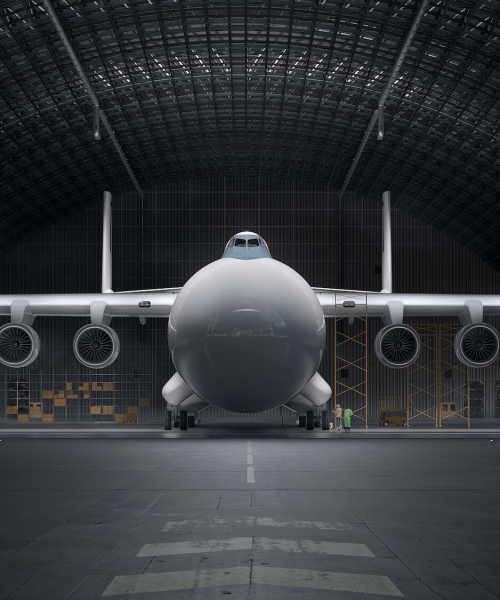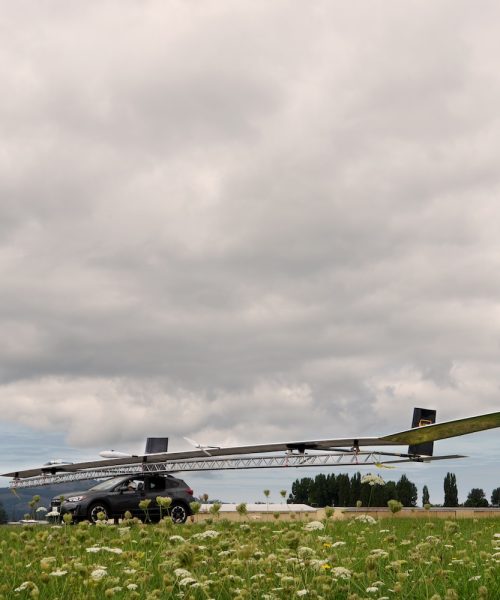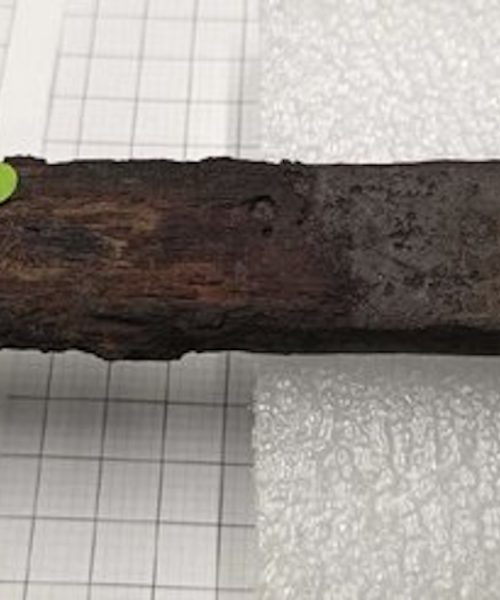Sometimes, high-tech solutions aren’t the best way to solve a problem. The US Army apparently came to that realization recently while exploring new methods to deter birds and other “problematic wildlife” from air bases. The military initially considered using Boston Dynamics’ dog-like Spot robot to scare off the intruders, but they quickly realized it wasn’t fast enough to effectively shoo the critters away.
A far more effective—and affordable—solution presented itself in the form of three life-sized plastic coyote decoys mounted on top of toy-sized autonomous vehicles. These cyborg watch dogs , set to make their debut at naval air bases sometime in the future, have a fitting name: “Coyote Rovers.”
“It all comes down to scare tactics…”, the US Army Engineer Research and Development Center (ERDC) wrote in a Linkedin Post earlier this year. ERDC posted a photo of the rovers on a lawn with the Navy’s Blue Angels fighter jets in the background.
Small birds can cause big problems
Damage from wildlife is a major concern for the military. In 2014, four Air Force servicemen were killed after a flock of Canadian geese reportedly flew through their helicopter’s windshield, knocking the pilot and copilot unconscious. Another bird then hit the helicopter’s nose and disabled its stabilization system, ultimately sending it crashing down. That wasn’t a one-off incident. In just the 10-year period between 2007 and 2016, the US Air Force reported 45,440 wildlife strikes that collectively led to $251 million worth of damages. The Air Force has even dedicated an entire team called The Bird/wildlife Aircraft Strike Hazard (BASH) tasked with mitigating these disturbances. That team has previously used hawks to ward off seagulls and helped design a radar system that reports potential bird strike intensity levels.
Members of BASH have been working with research wildlife biologists for the past five years on the Coyote Rover project. Some air bases, according to an Army Times report, had previously used real dogs to ward off wildlife but found that they could be unpredictable. The team’s early tests using the Spot robot failed because the high-tech robot couldn’t charge the pesky wildlifethem at fast enough speeds. Birds and other wildlife simply weren’t scared when Spot approached them. In some cases, the animals still wouldn’t move even after the quadruped bumped into them.
“What we found out quickly was, because it had such a slow approach speed, that it did more of just pushing animals out of the way once it finally got close enough to them, than it did really scaring them off,” ERDC research wildlife biologist Jacob Jung told Army Times.
Low tech, lower costs, better results
The Coyote Rover is comparatively low-tech. The rovers themselves are four-wheeled unmanned vehicles manufactured by Traxxas X-Maxx, a company better known for producing radio-controlled cars. The coyote decoys attached to them were reportedly sourced from a forestry supplier. Though simple in appearance, the rover can reach speeds of up to 20 miles per hour. That pace, combined with the silly-looking coyote doll, is apparently realistic enough to spook nearby animals. In total, the Coyote Rover units reportedly cost between $2,500 and $3,000. A single Spot robot, by contrast, reportedly costs $74,500.
Though still technically prototypes, ERDC says it has already successfully demonstrated the rovers’ capabilities in demonstrations held at Naval Air Stations Whiting Field and Pensacola in Florida and Fort Campbell in Kentucky. Researchers are also looking to improve future iterations of the coyote bots by adding in machine learning capabilities that should allow them to autonomously navigate to and from charging stations.
ERDC also sees potential roles for the coyotes beyond airfields. Shea Hammond, a research biologist focused on Robotic Characterization of Battlefield and Operational Environments for ERDC, told Army Times she believes the rovers could one day be used to remotely identify species of birds and other wildlife in deployed areas. They could even be deployed at locks and dams across the country that are maintained by the Army Corps of Engineers.
For now though, the Coyote Rover unit is limited to scarecrow duty.






